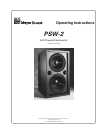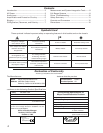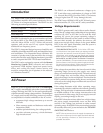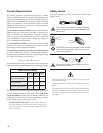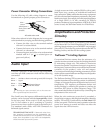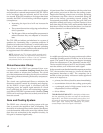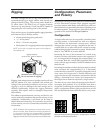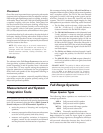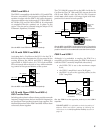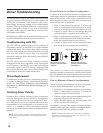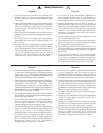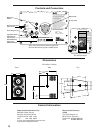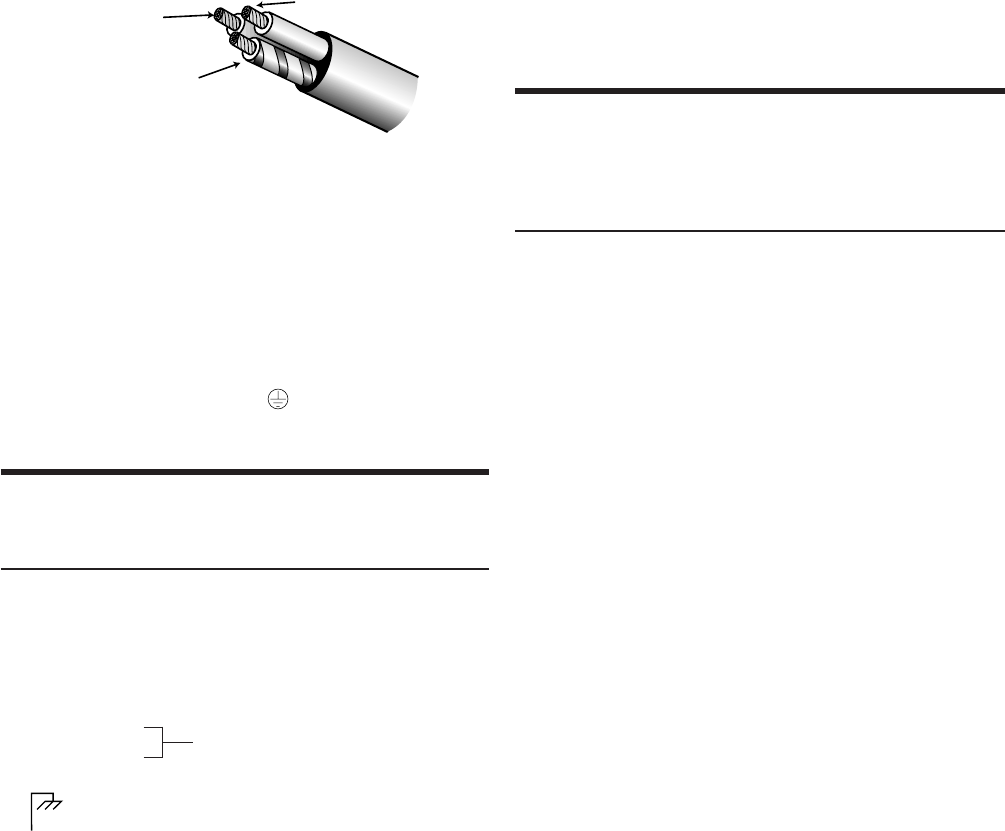
5
Power Connector Wiring Conventions
Use the following AC cable wiring diagram to create
international or special-purpose power connectors:
brown = hot
blue =
neutral
yellow/green =
earth ground
(chassis)
AC cable color code
If the colors referred to in the diagram don't correspond
to the terminals in your plug, use the following guidelines:
• Connect the blue wire to the terminal marked
with an N or colored black.
• Connect the brown wire to the terminal marked
with an L or colored red.
• Connect the green and yellow wire to the terminal
marked with an E (or ) or colored green (or
green and yellow).
Audio Input
The PSW-2 presents a 10 kΩ balanced input impedance
to a three-pin XLR connector wired with the following
convention:
Pin 1 — 220 kΩ to chassis and earth ground (ESD clamped)
Pin 2 — Signal
Pin 3 — Signal
Case — Earth (AC) ground and chassis
Shorting an input connector pin to the case can
form a ground loop and cause hum.
Pins 2 and 3 carry the input as a differential signal; their
polarity can be reversed with the input polarity switch
on the user panel. If the switch is in the up position,
pin 2 is hot relative to pin 3, resulting in a positive
pressure wave when a positive signal is applied to pin 2.
Use standard audio cables with XLR connectors for
balanced signal sources.
TROUBLESHOOTING NOTE: If abnormal noise (hum,
hiss, popping) is produced from the loudspeaker, dis-
connect the audio source from the speaker. If the noise
stops, then the problem is not within the loudspeaker;
check the audio input and AC power.
A single source can drive multiple PSW-2s with a paral-
leled input loop, creating an unbuffered hardwired
loop connection. Make certain that the source equipment
can drive the total load impedance presented by the paral-
leled input circuit. For example, since the input impedance
of a single PSW-2 is 10 kΩ, cascading 20 PSW-2s
produces a balanced input impedance of 500 Ω. If a 150 Ω
source is used, the 500 Ω load results in a 2.28 dB loss.
Amplification and Protection
Circuitry
Each driver in the PSW-2 is powered by one channel
of the Meyer MP-2, a 1240 W amplifier (620 W/channel)
utilizing complementary power MOSFET output stages
(class AB/H). The following sections discuss the MP-2’s
limiting circuitry and the two-fan cooling system.
TruPower™ Limiting System
Conventional limiters assume that the resistance of a
speaker remains constant and set the limiting threshold
by measuring voltage only. This method is inaccurate
because the speaker’s resistance changes in response to
the frequency content of the source material and thermal
variations in the speaker’s voice coil and magnet.
Conventional limiters begin limiting prematurely, which
under-utilizes system headroom and deprives the speaker
of its full dynamic range.
The TruPower limiting (TPL) system accounts for varying
speaker impedance by measuring current, in addition to
voltage, to compute the power dissipation and voice coil
temperature. TPL improves performance before and
during limiting by allowing the speaker to produce its
maximum SPL across its entire frequency range. TPL
also extends the lifetime of the drivers by controlling the
temperature of the voice coil.
When the safe continuous power level is exceeded, a
single limiter engages, affecting both amplifier channels
equally. TPL activity is indicated by the Sub Limit LED
on the user panel. The limiter ceases operation when the
power level returns to normal and does not affect the
signal when the LED is inactive.
Differential Inputs



